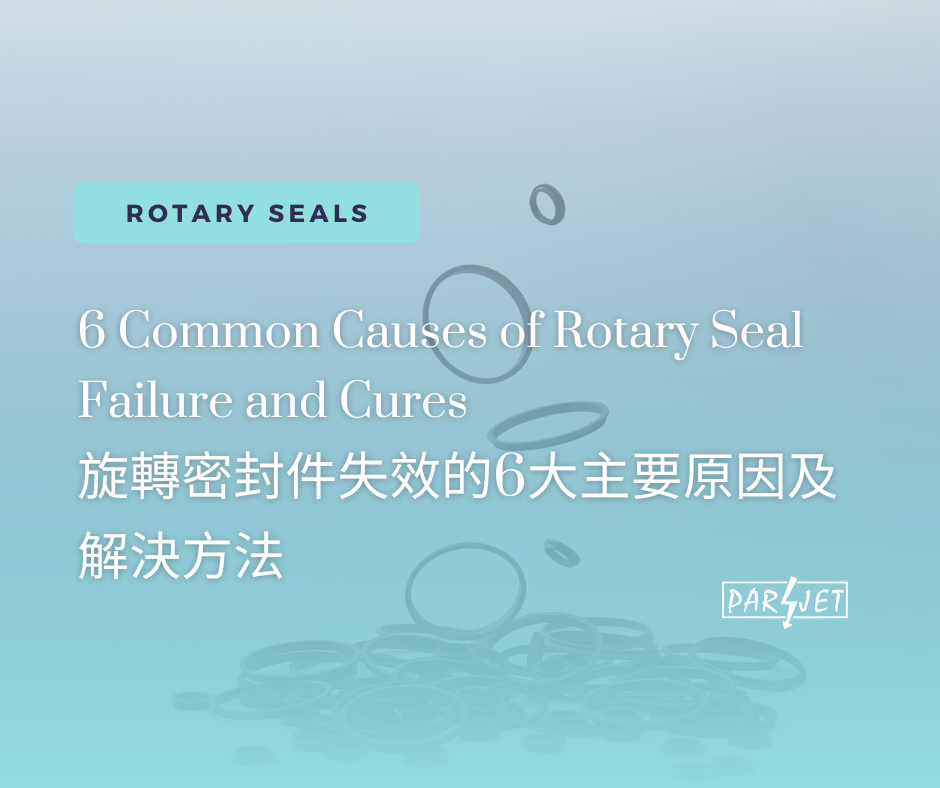6 Common Causes of Rotary Seal Failure and Cures
Rotary seals are crucial components in machinery, designed to prevent leakage and contamination while ensuring smooth operation. However, despite their importance, rotary seals can fail due to a variety of reasons. Understanding these causes and implementing appropriate sealing solutions can extend the life of your rotary seals, reduce downtime, and save costs. Here are 6 common causes of rotary seal failure and how to cure them.
1. Improper Installation
Cause: Incorrect installation is a leading cause of seal failure. Rotary seals can be damaged during installation or installed in the wrong direction, leading to immediate or premature failure.
Cure: Use the correct tools and follow manufacturer guidelines during installation. Implement error-proofing techniques to ensure rotary seals can only be installed in one correct way. Provide adequate training for personnel handling seal installation.
2. Wear and Abrasion
Cause: Continuous friction between the seal and the rotating shaft can lead to wear and abrasion. Contaminants in the system can accelerate this wear.
Cure: Choose seals made from materials with high wear resistance, such as PTFE compounds. Implement contamination control measures, like specialized seals and high-quality bearings, to minimize particle ingress and internal generation.
3. Extrusion
Cause: At high pressures, parts of the rotary seal can be forced into gaps in the hardware, leading to extrusion failure.
Cure: Use backup rings to support the seal under high-pressure conditions. Opt for thermoplastic seals instead of elastomeric ones for better high-pressure performance. Redesign the system to reduce gaps where extrusion can occur.
4. Compression Set
Cause: Seals can lose elasticity over time, especially under constant compression, leading to leakage at low pressures.
Cure: Use materials that are less prone to compression set. Increase the frequency of preventive maintenance to replace seals before they lose their elasticity. Consider switching to materials specifically designed to maintain elasticity under compression.
5. Chemical Incompatibility
Cause: Rotary seals can degrade or fail when exposed to incompatible chemicals, such as new hydraulic fluids or lubricants.
Cure: Verify chemical compatibility before changing fluids. Use seals made from materials known for broad chemical resistance, like certain PTFE compounds. Conduct thorough testing whenever the hydraulic fluid or lubricant formulation is changed.
6. Pressure Trapping
Cause: When two seals are placed next to each other and seal in the same direction, fluid can become trapped between them. This trapped pressure can eventually cause one of the seals to fail.
Cure: Design systems to allow fluid to be pumped back into the pressurized side, preventing pressure buildup. Use back-pumping designs and ensure seals are oriented to prevent fluid entrapment.
Rotary seal failure can be mitigated by understanding the common causes and implementing appropriate solutions. Proper installation, selecting the right materials, and maintaining rigorous system checks are essential to prolong the life of rotary seals. By addressing these issues proactively, you can ensure the reliability and efficiency of your machinery, minimizing downtime and reducing maintenance costs.
Finite Element Analysis (FEA) is a powerful tool that models the impact of various real-world factors on seals, such as temperature, vibration, material properties, friction, and usage conditions. Thanks to Parjet’s advanced FEA capabilities, the continuous analysis data allow us to simulate the performance of all kinds of rotary seals under specific conditions accurately. This technology offers significant time and cost savings by predicting the outcomes of seal designs without the need for physical testing. Additionally, it aids in identifying and understanding potential weaknesses in various rotary seal designs, thereby helping to prevent failures and optimize performance.
For expert guidance on selecting and maintaining rotary seals, please feel free to contact us.
We are your trusted rotary seal manufacturer for high-performance sealing solutions tailored to your specific needs.






